Heveningham Hall Concours, Hill Climb and Country Fair
A delightful weekend with classic cars at a sumptuous estate in the English countryside
WORDS & IMAGES BY: PETER STEVENS
Peter Stevens is one of the world’s best-known and most sought-after automotive designers. He is a consultant designer who is committed to the vital importance of design education. Alongside his consultancy, he lectures internationally and was until recently Visiting Professor at London’s Royal College of Art. Professor Stevens is well known as the designer of the acclaimed McLaren F1 road car which marked a paradigmatic shift in high performance car design. Produced between 1993 and 1997, the car remains extraordinarily influential.
One of the more attractive aspects of either visiting or judging at a concours event is that they often take place at either a Schloss in Germany, a Chateau in France, a sumptuous villa in Switzerland, a Palace in India, or sometimes, a smart hotel or damp golf course in America. In Britain there are a number of palaces that hold concours events, but the private home of the Hunt family is something very special. Heveningham Hall, in the middle of Suffolk and close to the tiny village of Heveningham, is a Grade 1 listed building and as good as it gets.
Heveningham Hall’s fascinating past is worth sharing. The first house on the site was built in 1658 for the politician and regicide William Heveningham. After attending Pembroke College, Cambridge, he married Catherine Wallop, the daughter of Sir Henry Wallop. MP, an extremely wealthy and influential resident of Hampshire and Wiltshire. After Catherine’s death in 1648, Heveningham’s second marriage, in 1650, was to Mary Carey, daughter of the Earl of Dover. On his father’s death in 1633, William inherited substantial properties. He was active in the administration of East Anglia during the Civil Wars and advanced money for the support of the parliamentarian garrison at Newport Pagnell, Buckinghamshire. Although he was an elder of the Presbyterian Classis in Dunwich, Suffolk, he was associated with the Independent faction in Parliament. His support for the army during 1648 was motivated by the desire to avoid the risk of a military coup, and thus keep power in the hands of civilian parliamentarians. In January 1648, he was appointed a Commissioner of the High Court of Justice for the trial of King Charles. He attended every session of the trial but refused to sign the King’s death warrant. However, he was one of the first MPs to certify his approval of the King’s execution, as required by parliament in February 1649. He was a member of the Council of State in 1649-50, but his parliamentary activity declined during the Commonwealth and Protectorate. He built a substantial fortune through buying up properties confiscated from the church and from Royalists, and he speculated in buying up army debentures. He was probably the first of the regicides to surrender to the authorities at the Restoration in 1660. He was brought to trial in Oct.1660, found guilty of treason for his part in the King’s trial and sentenced to death. He successfully petitioned for mercy, supported by his wife’s family connections, claiming he tried to prevent Charles’ execution, had opposed Cromwell’s tyranny, and had contributed five hundred pounds to Booth’s Uprising in 1659. He was imprisoned in Windsor Castle, where he remained until his death in 1678.
The present house, dating from 1778 to 1780, was designed by Sir Robert Taylor for Sir Gerald Vanneck, 2nd Baronet, with interiors by James Wyatt. Sir Gerald was a wealthy British merchant and Member of Parliament. The hall remained in the Vanneck family until 1981. This was a period when many grand English country houses became almost impossible to either maintain or sell and Heveningham was not alone in being offered to the nation in 1965. It was acquired in 1969 by English Heritage, repaired to a degree and sold in 1977 to an absentee owner who allowed the building to fall into decline, particularly after a major fire in the East Wing. After being on the market for three years, the hall and grounds were bought in 1994 by current owner Jon Hunt and his wife for use as a family home. Since the 1990s the Hunts have returned over five hundred acres of the grounds using Capability Brown‘s original – but never implemented – designs, working with the noted English landscape architect Kim Wilkie.
And this is where the location of the concours becomes so remarkable. The garden at the back of the house consists of a series of five grassed terrasses laid out in a semi-circular plan ringed with trees. The theme of the annual concours is loose and unpretentious, this year the hundredth anniversary of the Le Mans 24 Hours race was the major category, but the Glory of Pre-war Design was another, and the other, again with an emphasis on design, was for Post-war Design Masterpieces. Judging was very straight forward, based on delight, a touch of prejudice, and how the cars appealed to our sensibilities. The four judges were Max Hunt, the son of our host, Marino Franchitti, the British racing driver, Tony Hatter, designer of many of Porsche’s Le Mans GT cars, and me, billed as a designer and competition car enthusiast. Good friend Tony and I agreed not to champion either the “Harrods” McLaren F1 GTR or the Porsche 911 GT1!
As well as the concours at Heveningham, there is an eighth-mile hill climb sprint which both concours entrants and “fast and noisy cars” can enter. I had put together a small selection of classic hot rods, which caused some to be shocked, but others loved.
Among my favorite cars was a stunning 1936 SS 100 “Jaguar” Special. It was not until 1945 that William Lyons decided to replace the marque name SS with Jaguar; as he put it, “the letters SS had by that time come to be associated with ‘a sector of the community not highly regarded!’” SS 100 chassis 1808 began life as a production road car but by 1938 it had been heavily modified with a blown 3.5-liter 6-cylinder engine by the famous engineer Walter “Wally” Hassan who stripped weight from the car and added the twin rear wheels for hill climb events.
Next up was a car I had never seen before – the 2022 Praga Bohema, a true “supercar” built in the Czech Republic and as different from the SS 100 as it is possible to be. A two-seater high performance road car that weighs just 982kg – when so many “hyper-cars” weigh almost twice that – the Praga has a Nissan based 700 bhp V6 and produces 900kg of downforce at 155mph. The attention to detail from things as obscure as door hinges and door locks to perfect carbon fiber weave layup demonstrated to me that this is a company that puts quality above all else.
From the Praga, I leapt back more than a century to a 1912 Rolls-Royce Silver Ghost Torpedo Phaeton Tourer. The car was sent to India as a “Factory Demonstrator” to investigate what special equipment might be needed for the rugged conditions found in the subcontinent. Chassis 2154 was given extra large diameter wheels to improve the ground clearance; a louvred bonnet and upgraded carburetor were also fitted, as were two horns, one a very noisy device for warning other road users and a gentle one for encouraging sacred cows to make way for the car. The Barker-bodied car was sold to the Maharaja of Nahab and kept in the family for almost eight decades, though it was driven very little. It was sold in 1990 to the UK-based Forrest family who were able to bring it out of India before that became an impossibility. The car was beautifully presented by the Forrest’s enthusiastic daughter, who also took it on Lois Hunt’s “Suffolk Tour” the day before the concours.
There were many great cars to enjoy. The 1951 Porsche 356 Coupe “split window” Reutter- bodied car contrasted nicely against a 1964 Alfa Romeo Giulia TZ, demonstrating two different approaches to an aerodynamic rear plan view. The 356 had been exported to America in the early 1960s but by 1987 it was left sitting out in the open near Altadena in Southern California until 2008 when it was brought to England for a full restoration by Andy Prill. Apparently the body was still sound, but all the rubbers, trim, fabrics and wiring disintegrated at the slightest touch!
Pink Floyd drummer Nick Mason brought his 1978 Lola T297, the 2.0-liter car he drove with Brian Joscelyn at the 1979 Le Mans 24 Hours. Even though he had never driven a modern race car before, Nick made the whole thing sound so easy – incredibly, they finished second in class and 18th overall, making Nick quite pleased he’d bought the car! Since 1980, the car’s graphic scheme is based on savage political cartoonist and illustrator Gerald Scarfe’s album cover artwork for The Wall, Pink Floyd’s eleventh album.
The “Circus Burner,” a 1930 Ford Model A Sprint Racer, McDowell Special with a Roof 101 Cyclone “inlet over exhaust” cylinder head on a modified 1925 Essex chassis was just one of the hot rods that ran in the hill climb together with both Jonathan Suckling and Richard Rimmer’s Ford Model B roadsters.
With a nicely laid-back program over the weekend, I was able to look around, catch up with designer friends and talk to a delightful couple who worked calmly and unobtrusively, but continuously, keeping all the cars looking their best. Careful detailing by Chris and Philippa McCleery, using a special washing solution that smelled like fresh custard, gave me a chance to find out more about this unsung skill. We discussed the fact that washing a car, like a designer running his hand over the surface of a prototype of a car, can tell you so much more about the form of a car’s body. It is time well spent.
As if Lois Hunt does not give herself enough to do during the long weekend of the concours, she also organizes a vintage aircraft concours and a Country Fair on the other side of the house – that is, up on the grass airstrip! There was lots to see and do – sheep shearing, gloriously giant Suffolk Punch working horses, a dog show, local crafts, food and drink, and a most satisfying ice cream – making this very hot weekend something to both remember and spread the word about.
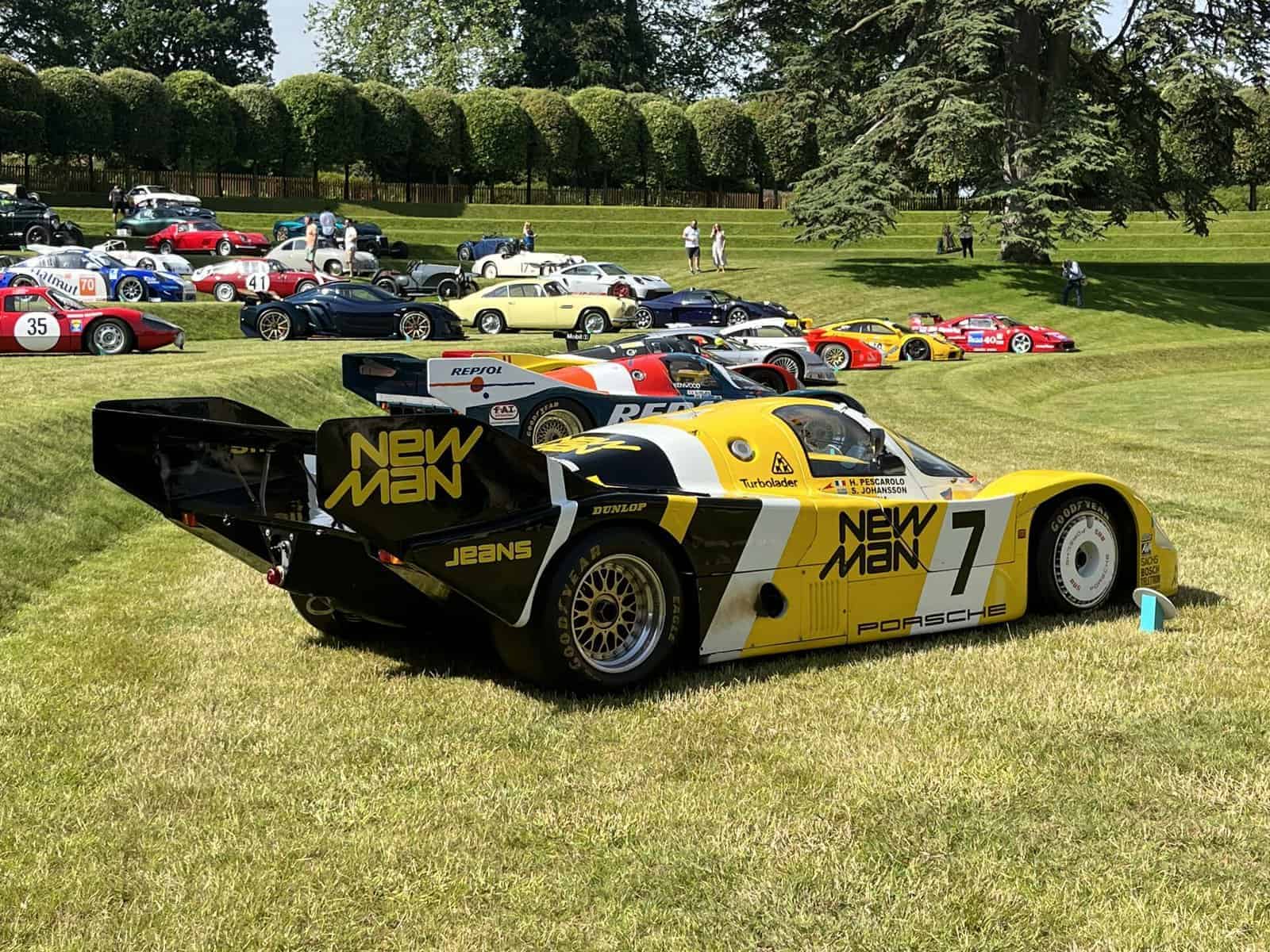
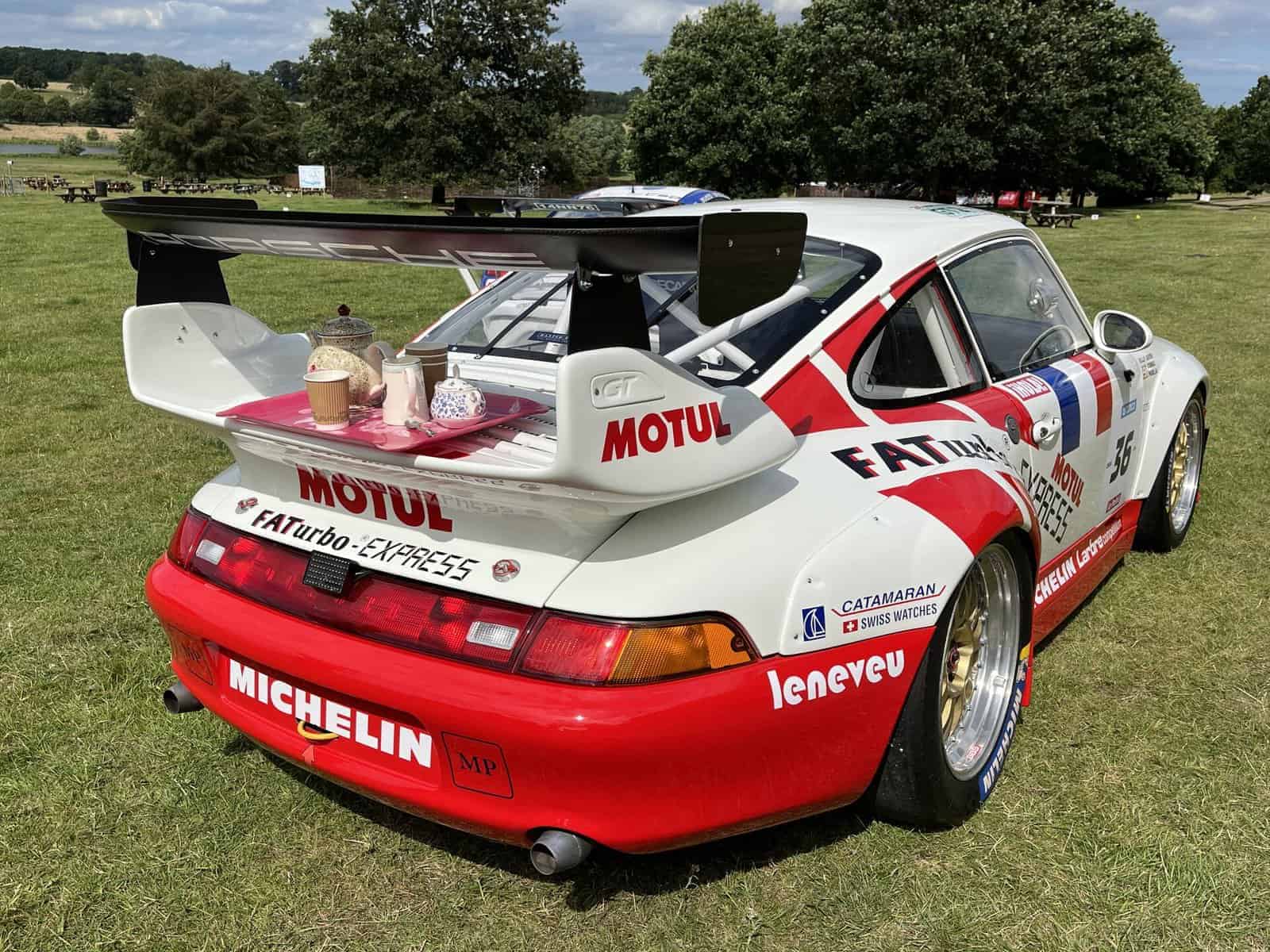
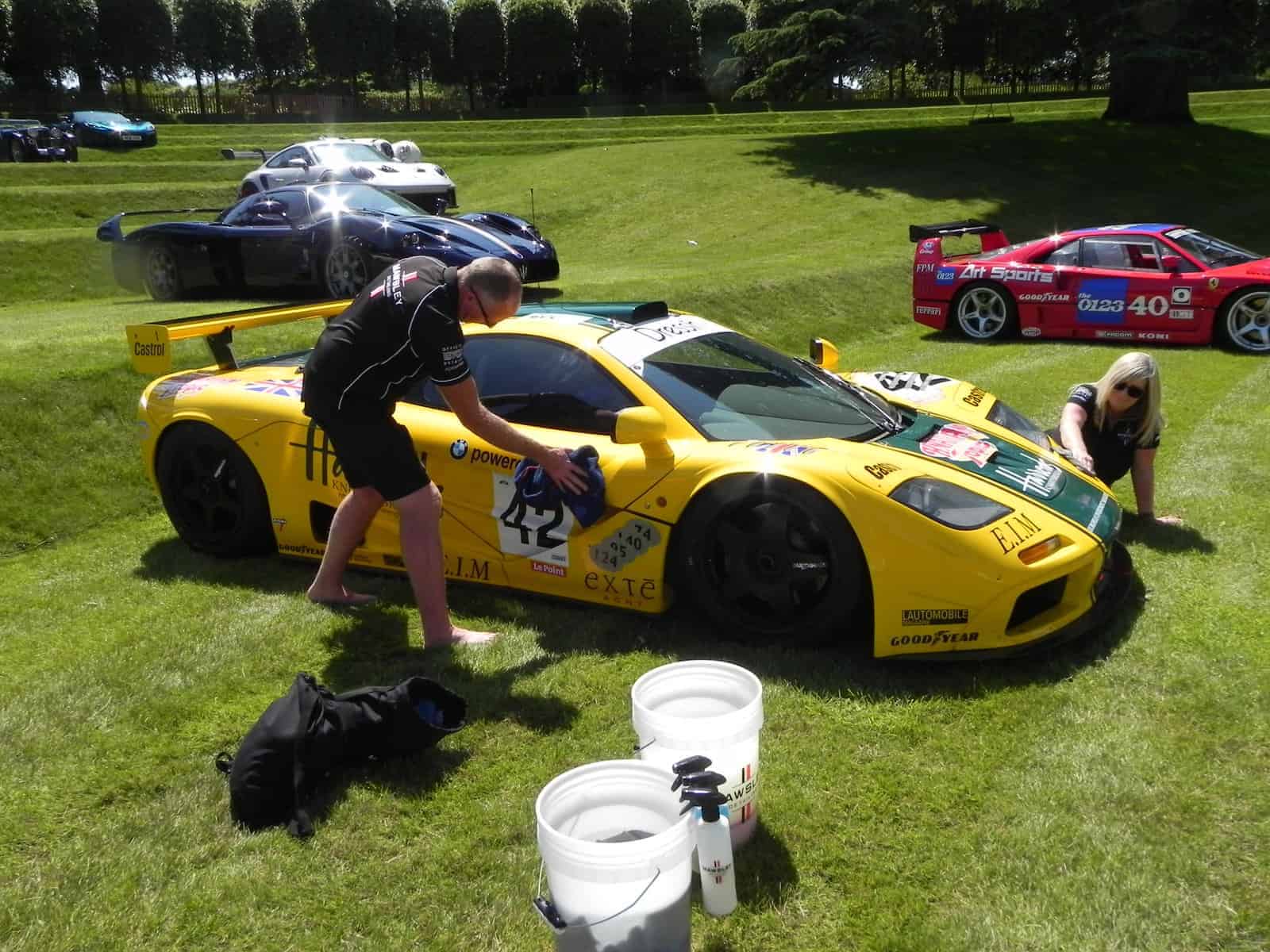
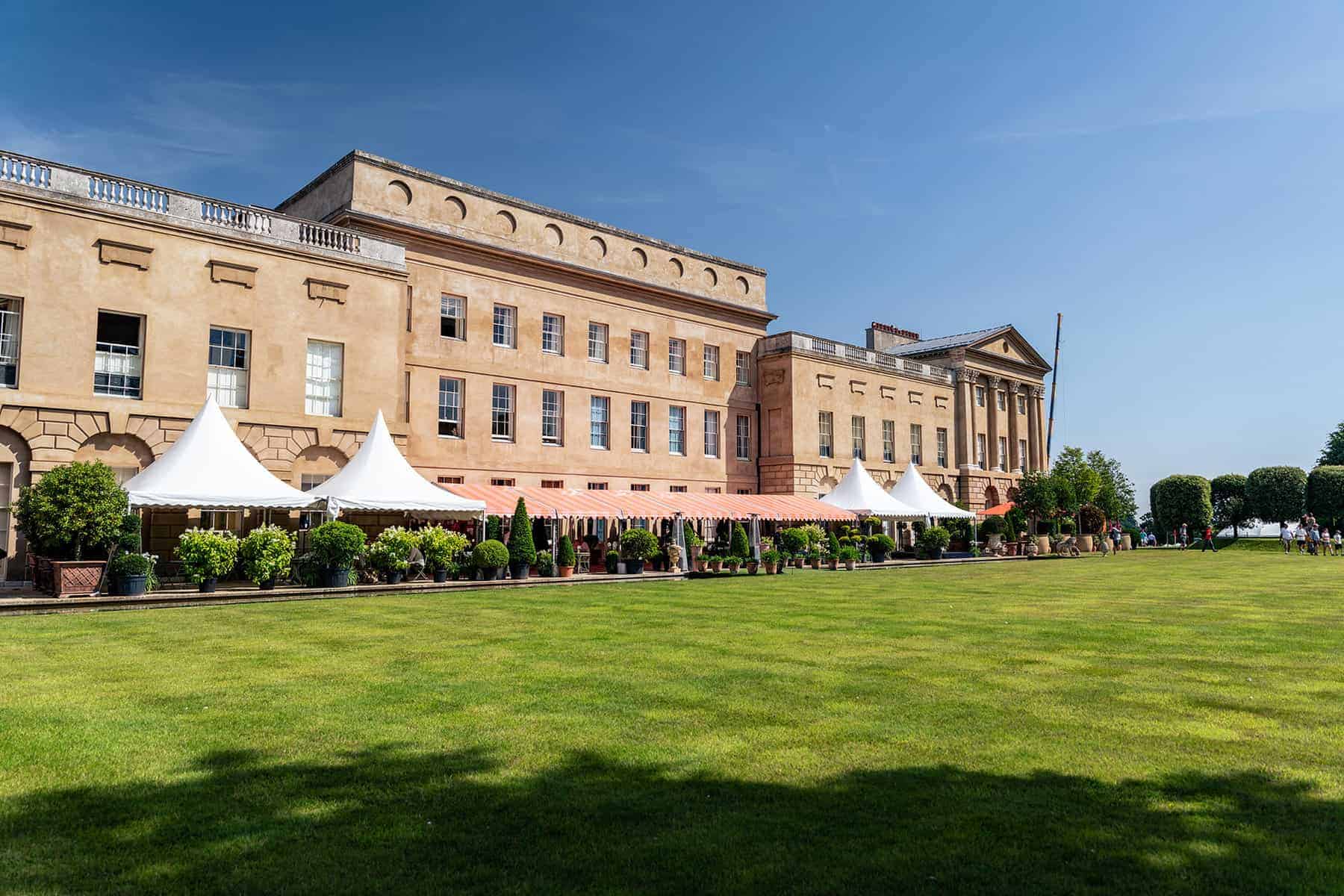


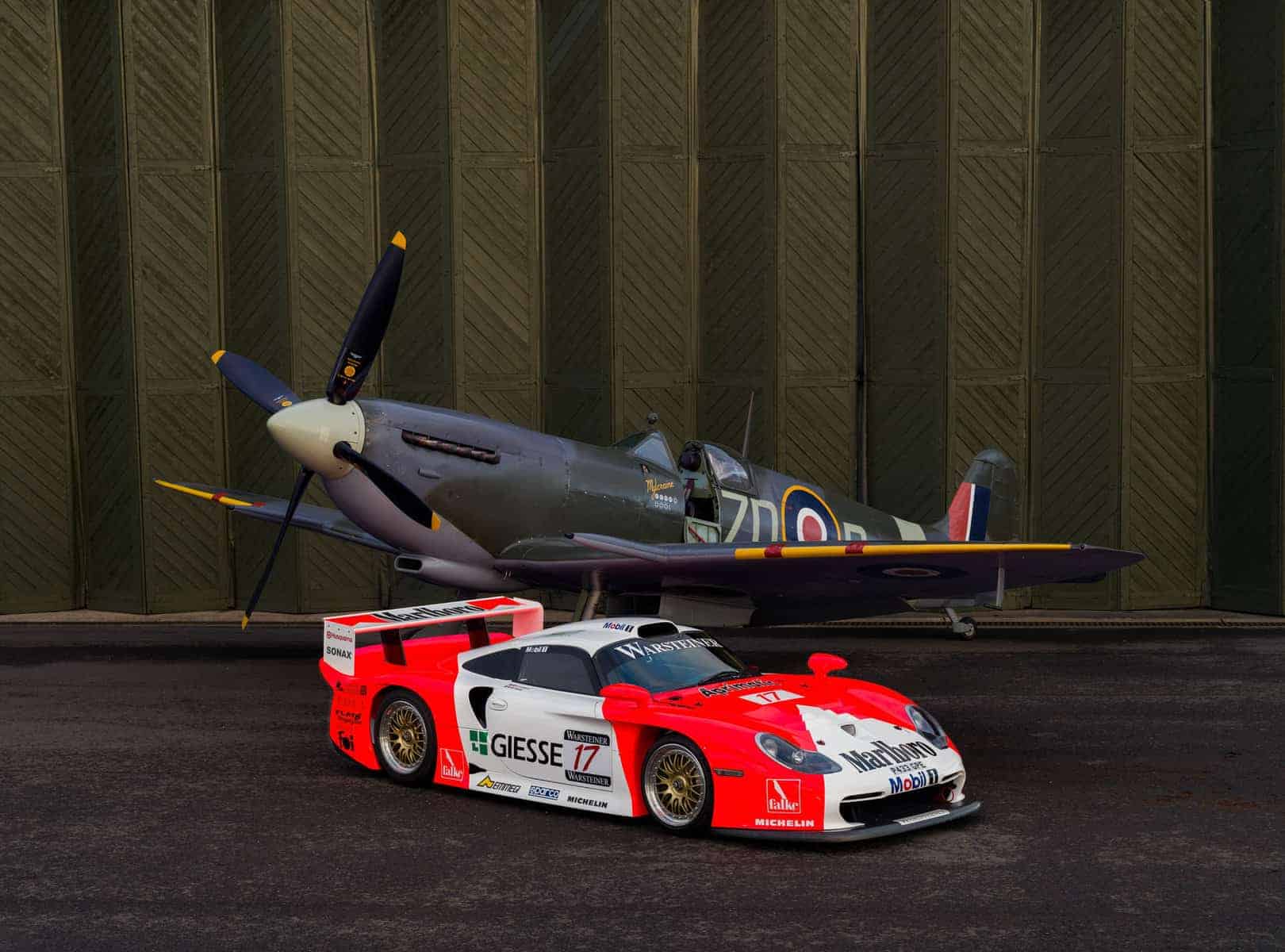
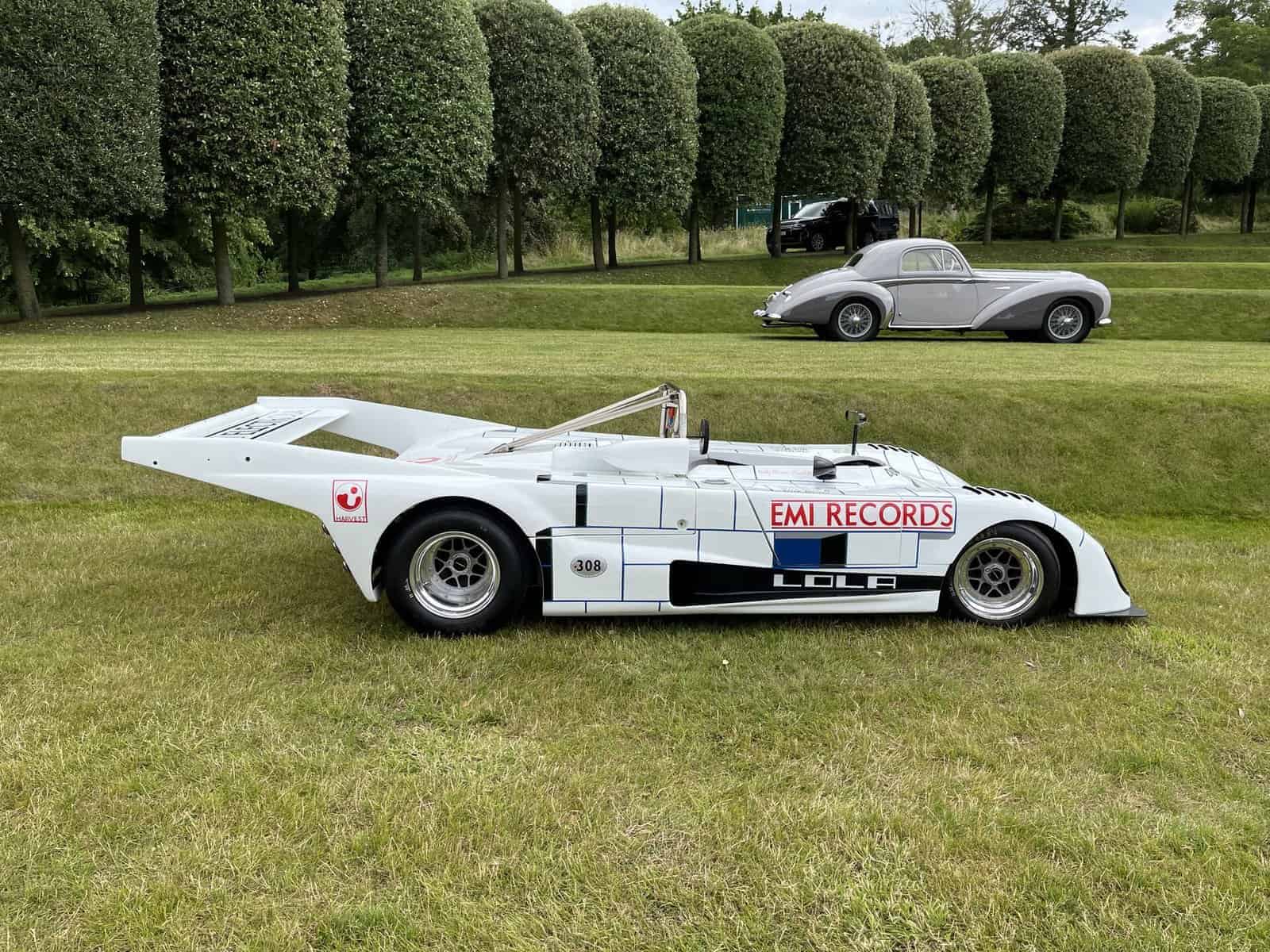


![alfa gtz perfectly imperfect webannerl[1]](https://automedia.revsinstitute.org/wp-content/uploads/2024/08/Alfa-GTZ-Perfectly-Imperfect-webannerl1-uai-1200x800.jpg)

